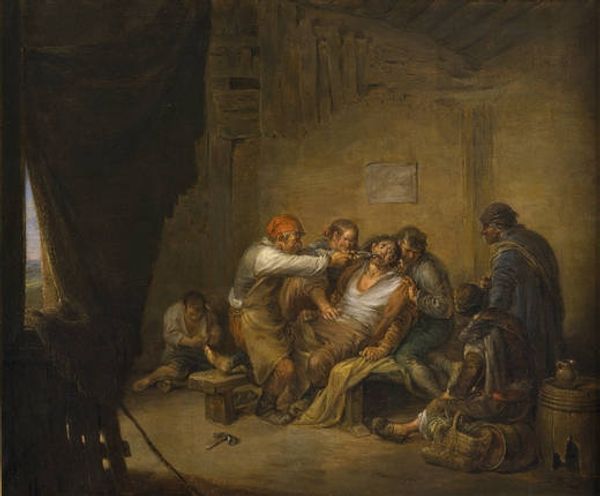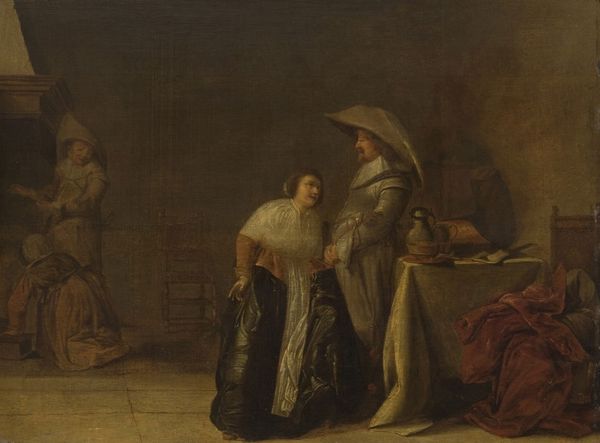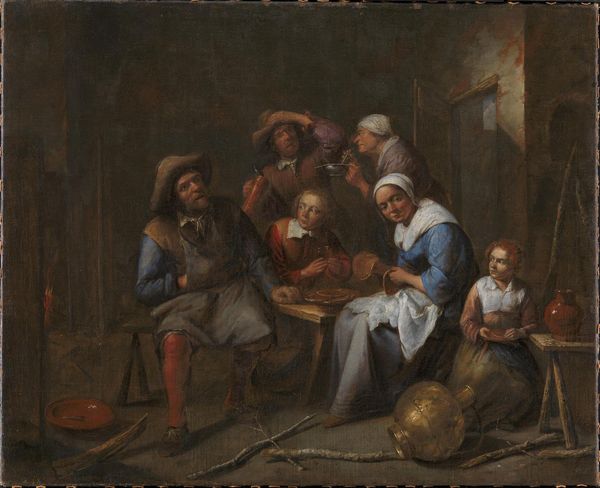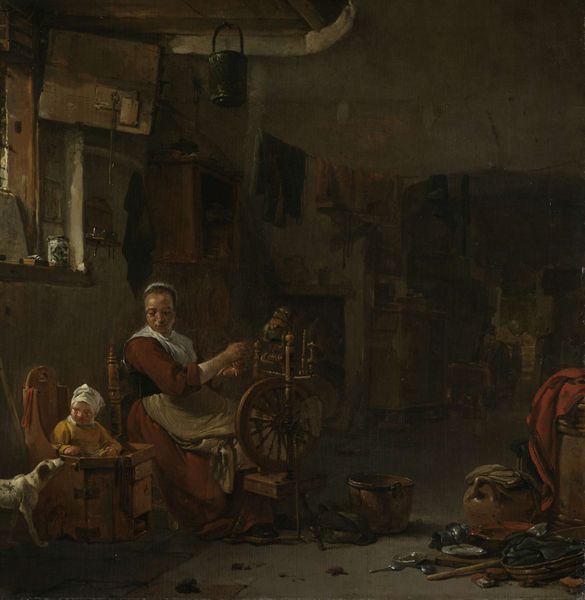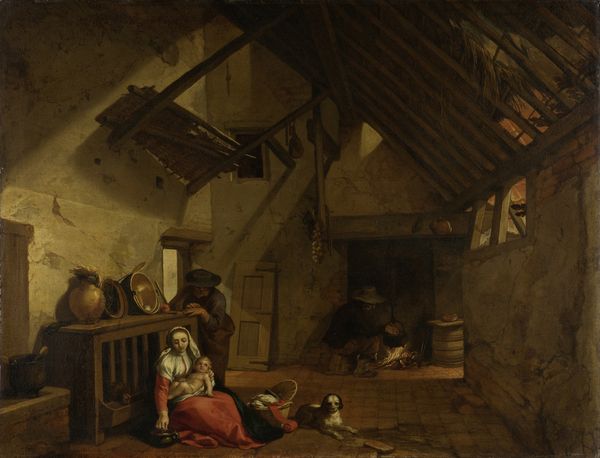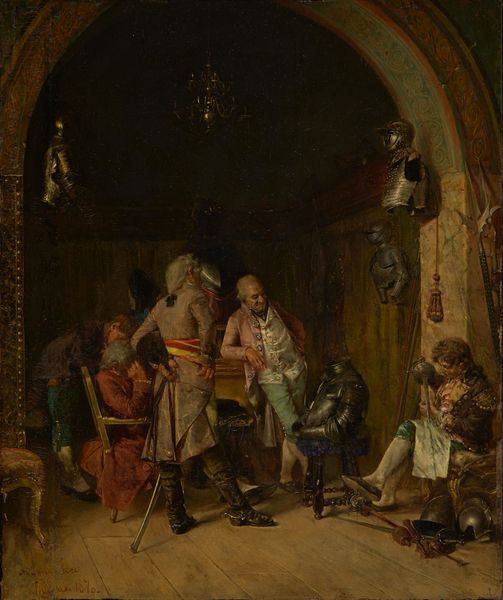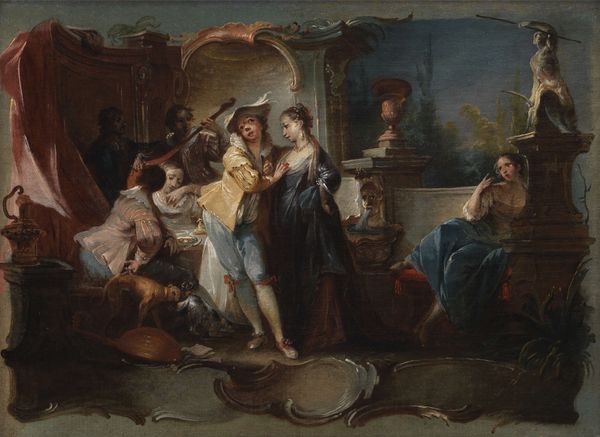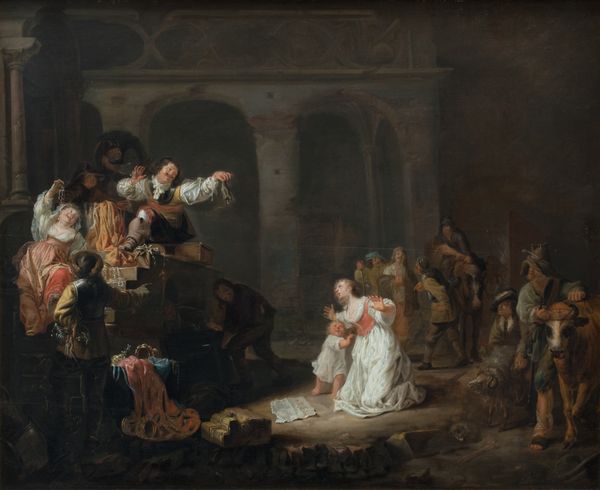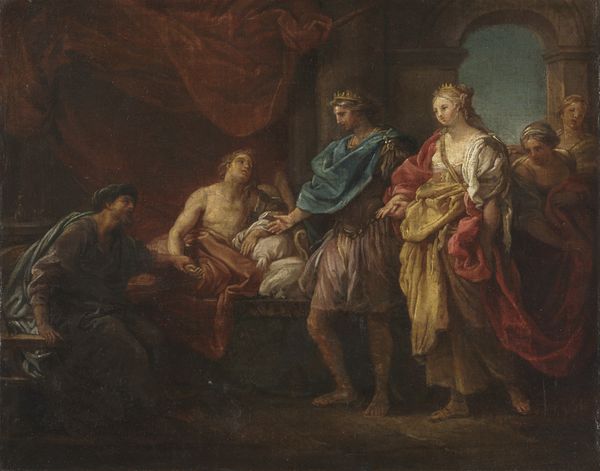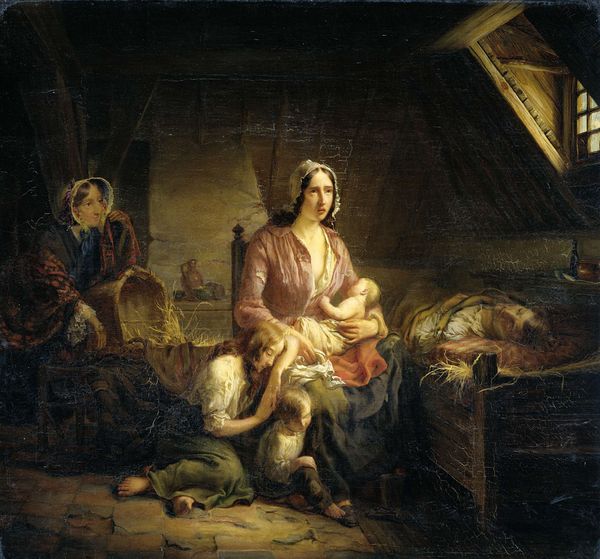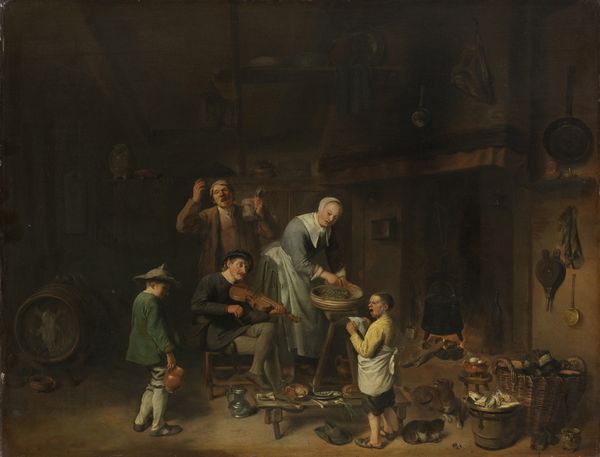
painting, oil-paint
#
painting
#
oil-paint
#
oil painting
#
romanticism
#
genre-painting
#
history-painting
Copyright: Public domain
Leonardo Alenza painted "The Triumph of Bacchus" in Spain, sometime before 1845. It’s an oil on panel, showing a scene of drunken revelry, riffing on classical depictions of Bacchus, the god of wine. Look at how Alenza subverts the traditional heroic imagery. The setting isn’t a lush landscape, but a dingy cellar. Instead of noble figures, we see ordinary, disheveled men. The ‘triumph’ is not one of glory, but of intoxication and social breakdown. In Spain, at this time, the artistic institutions, like the Real Academia de Bellas Artes where this hangs now, were deeply conservative, promoting idealized visions of history and society. Alenza, however, was part of a generation questioning these norms. To understand Alenza fully, we can delve into the social conditions of 19th-century Spain. We can look at the rise of Romanticism, and the growing interest in portraying everyday life. By exploring these contexts, we start to understand how art reflects and comments on the world around it.
Comments
No comments
Be the first to comment and join the conversation on the ultimate creative platform.

